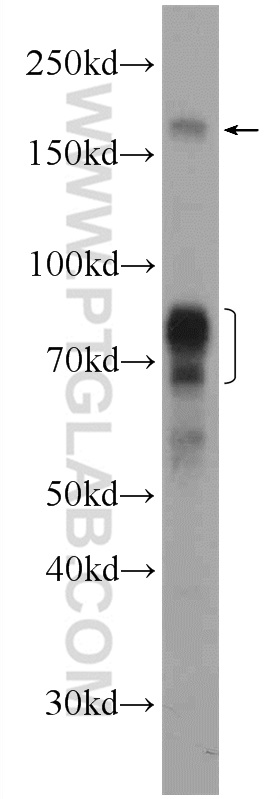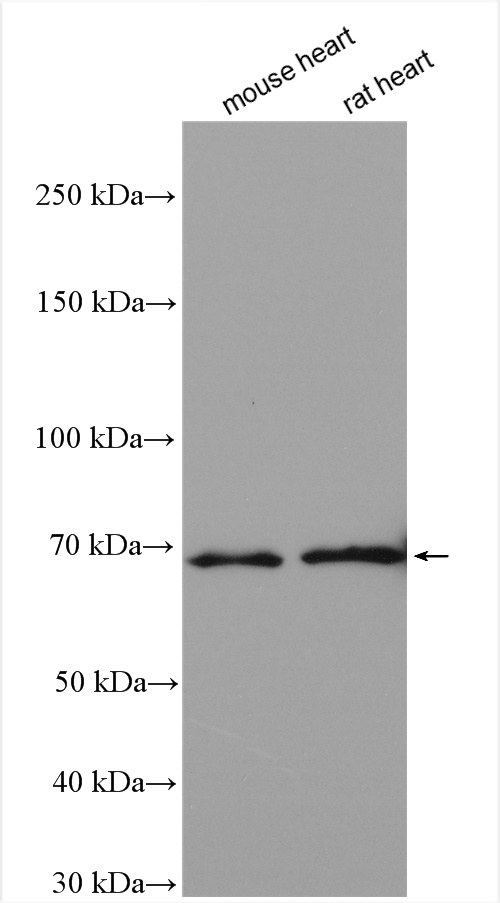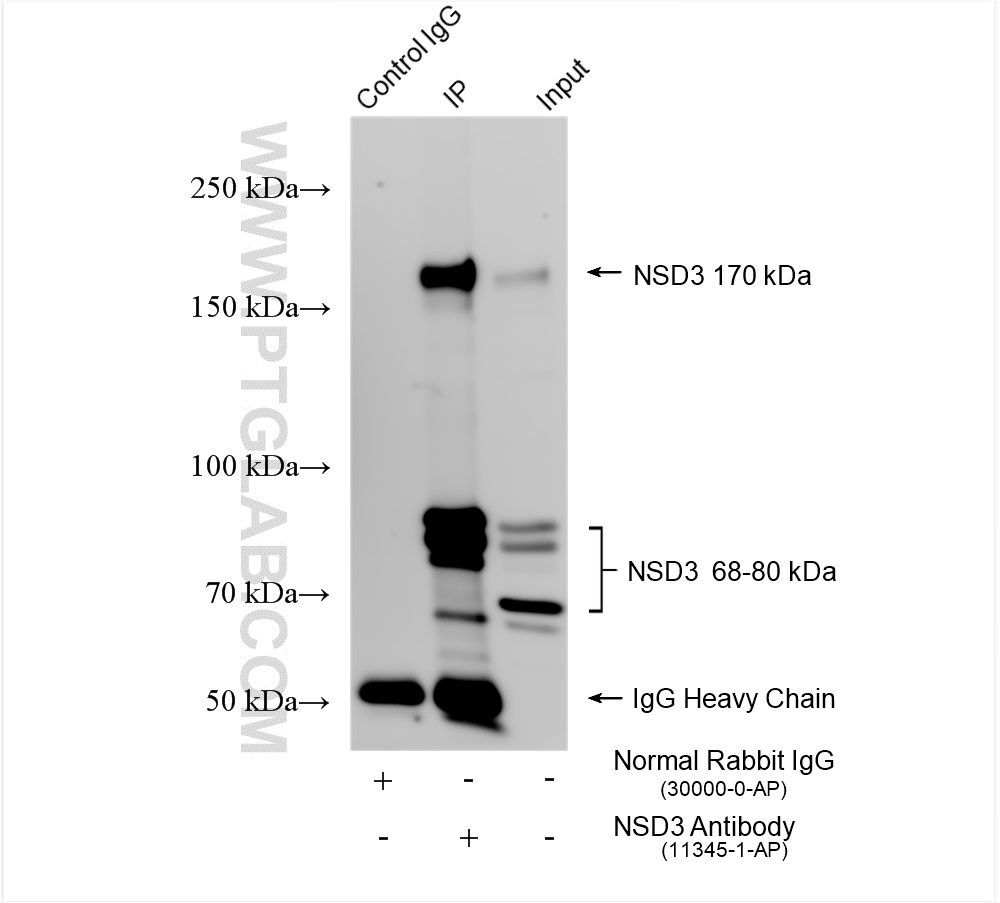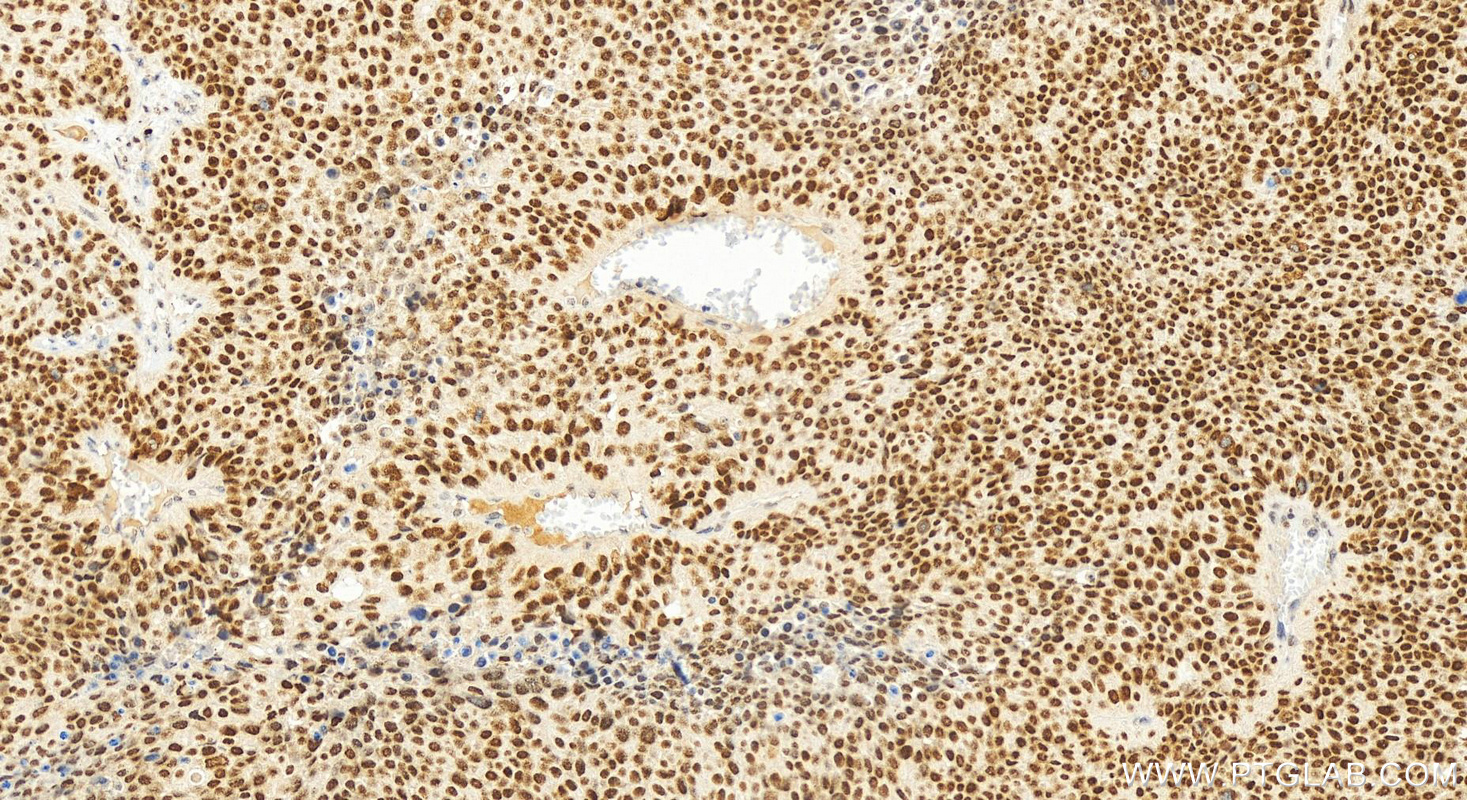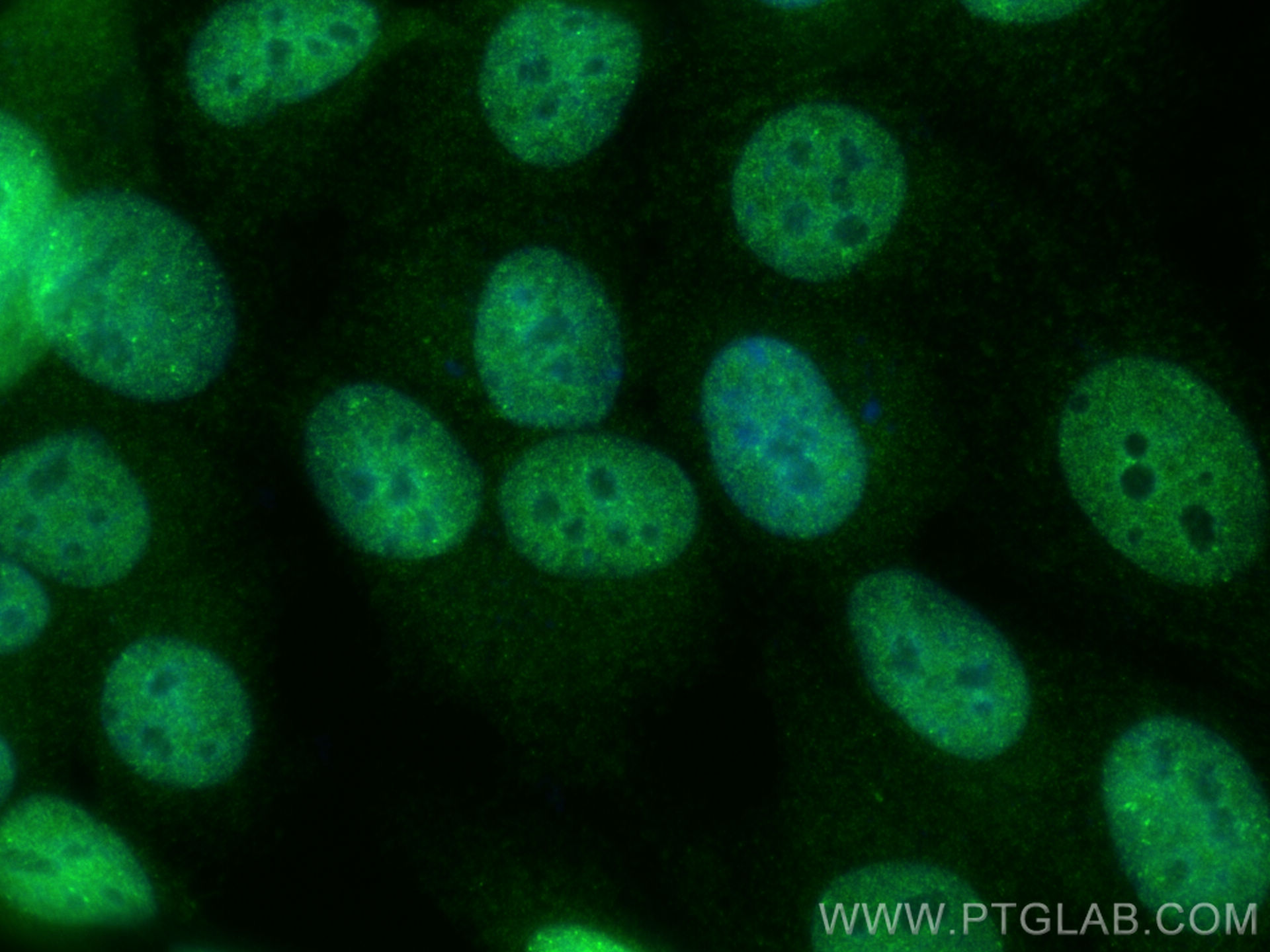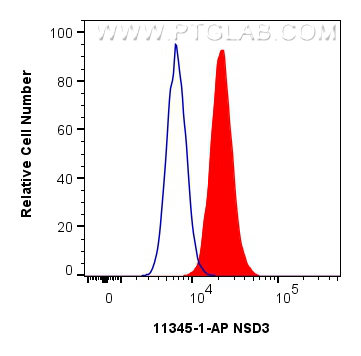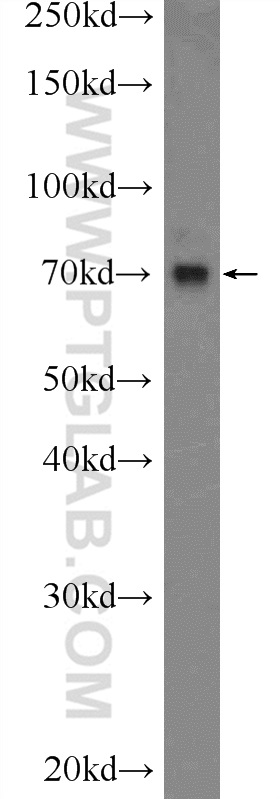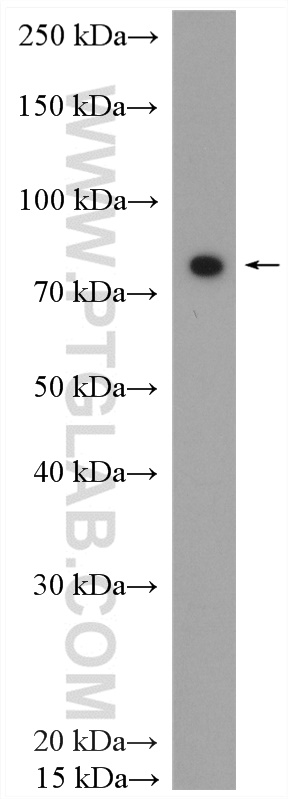验证数据展示
经过测试的应用
| Positive WB detected in | HeLa cells, HEK-293 cells, rat heart tissue, mouse heart tissue |
| Positive IP detected in | HeLa cells |
| Positive IHC detected in | human lung squamous cell carcinoma tissue Note: suggested antigen retrieval with TE buffer pH 9.0; (*) Alternatively, antigen retrieval may be performed with citrate buffer pH 6.0 |
| Positive IF/ICC detected in | MCF-7 cells |
| Positive FC (Intra) detected in | NIH/3T3 cells |
推荐稀释比
| 应用 | 推荐稀释比 |
|---|---|
| Western Blot (WB) | WB : 1:500-1:1000 |
| Immunoprecipitation (IP) | IP : 0.5-4.0 ug for 1.0-3.0 mg of total protein lysate |
| Immunohistochemistry (IHC) | IHC : 1:400-1:1600 |
| Immunofluorescence (IF)/ICC | IF/ICC : 1:200-1:800 |
| Flow Cytometry (FC) (INTRA) | FC (INTRA) : 0.25 ug per 10^6 cells in a 100 µl suspension |
| It is recommended that this reagent should be titrated in each testing system to obtain optimal results. | |
| Sample-dependent, Check data in validation data gallery. | |
产品信息
11345-1-AP targets NSD3 in WB, IHC, IF/ICC, FC (Intra), IP, chIP, ELISA applications and shows reactivity with human, mouse, rat samples.
| 经测试应用 | WB, IHC, IF/ICC, FC (Intra), IP, ELISA Application Description |
| 文献引用应用 | WB, IHC, IF, chIP |
| 经测试反应性 | human, mouse, rat |
| 文献引用反应性 | human |
| 免疫原 |
CatNo: Ag1894 Product name: Recombinant human WHSC1L1 protein Source: e coli.-derived, PGEX-4T Tag: GST Domain: 1-300 aa of BC012059 Sequence: MDFSFSFMQGIMGNTIQQPPQLIDSANIRQEDAFDNNSDIAEDGGQTPYEATLQQGFQYPATTEDLPPLTNGYPSSISVYETQTKYQSYNQYPNGSANGFGAVRNFSPTDYYHSEIPNTRPHEILEKPSPPQPPPPPSVPQTVIPKKTGSPEIKLKITKTIQNGRELFESSLCGDLLNEVQASEHTKSKHESRKEKRKKSNKHDSSRSEERKSHKIPKLEPEEQNRPNERVDTVSEKPREEPVLKEEAPVQPILSSVPTTEVSTGVKFQVGDLVWSKVGTYPWWPCMVSSDPQLEVHTKI 种属同源性预测 |
| 宿主/亚型 | Rabbit / IgG |
| 抗体类别 | Polyclonal |
| 产品类型 | Antibody |
| 全称 | Wolf-Hirschhorn syndrome candidate 1-like 1 |
| 别名 | WHSC1L1, DC28, EC:2.1.1.370, Histone-lysine N-methyltransferase NSD3, Nuclear SET domain-containing protein 3 |
| 计算分子量 | 1437 aa, 162 kDa |
| 观测分子量 | 160-170 kDa, 68-72 kDa |
| GenBank蛋白编号 | BC012059 |
| 基因名称 | WHSC1L1 |
| Gene ID (NCBI) | 54904 |
| RRID | AB_2216189 |
| 偶联类型 | Unconjugated |
| 形式 | Liquid |
| 纯化方式 | Antigen affinity purification |
| UNIPROT ID | Q9BZ95 |
| 储存缓冲液 | PBS with 0.02% sodium azide and 50% glycerol, pH 7.3. |
| 储存条件 | Store at -20°C. Stable for one year after shipment. Aliquoting is unnecessary for -20oC storage. |
背景介绍
WHSC1L1, also named as NSD3 and DC28, belongs to the histone-lysine methyltransferase family and SET2 subfamily. It is histone methyltransferase. WHSC1L1 is a potently transforming oncogenes based on the number of altered phenotypes expressed by the cells. It contains a PWWP-domain that is a methyl-lysine recognition motif involved in histone code modification and epigenetic regulation of gene expression. Knockdown of WHSC1L1 in 8p11-12-amplified breast cancer cells resulted in profound loss of growth and survival of these cells. (PMID: 20940404). This antibody recognize the long isoform (160-170 kDa) and short isoform (68-72 kDa).
实验方案
| Product Specific Protocols | |
|---|---|
| IF protocol for NSD3 antibody 11345-1-AP | Download protocol |
| IHC protocol for NSD3 antibody 11345-1-AP | Download protocol |
| IP protocol for NSD3 antibody 11345-1-AP | Download protocol |
| WB protocol for NSD3 antibody 11345-1-AP | Download protocol |
| Standard Protocols | |
|---|---|
| Click here to view our Standard Protocols |
发表文章
| Species | Application | Title |
|---|---|---|
Cancer Res NSD3-Induced Methylation of H3K36 Activates NOTCH Signaling to Drive Breast Tumor Initiation and Metastatic Progression. | ||
Cancer Res Transforming properties of 8p11-12 amplified genes in human breast cancer.
| ||
Mol Oncol Amplification of WHSC1L1 regulates expression and estrogen-independent activation of ERα in SUM-44 breast cancer cells and is associated with ERα over-expression in breast cancer. | ||
Sci Rep NSD2 contributes to oncogenic RAS-driven transcription in lung cancer cells through long-range epigenetic activation. | ||
Sci Rep WHSC1L1-mediated EGFR mono-methylation enhances the cytoplasmic and nuclear oncogenic activity of EGFR in head and neck cancer.
|

